
How to Write a One-Page Marketing Plan Template

From small businesses to big companies, they all need proper guidelines to reach out to their customers and improve their sales. With a marketing plan, you can set the baseline and conditions to make your brand more recognizable to the public and your target audience.
Writing a one-page marketing plan will be more concise and perfect for your business if you need to introduce your plan to any key stakeholder, as it is shorter and reaches the key points. That's why we'll take a look at how you can write your own one-page marketing plan.
But before getting there, we need to set up what is a marketing plan, the main idea behind all of this. Overall, a one-page marketing plan is a summarized version of the original marketing plan.
What’s a Marketing Plan
The marketing plan is a document that traces your strategy for the marketing campaign. It serves as a roadmap for your business to increase recognition about a service or product and how you want to deliver them to your target market.
Its main purpose is to align the marketing efforts to reach specified and realistic marketing goals, which should meet the overall business objectives.
But how a marketing plan should look depends on how large your business is and the scope of your objectives. With a good planning process, a small business or even a nonprofit organization could benefit from a careful, well-designed marketing plan.
Why Should I Establish a Marketing Plan
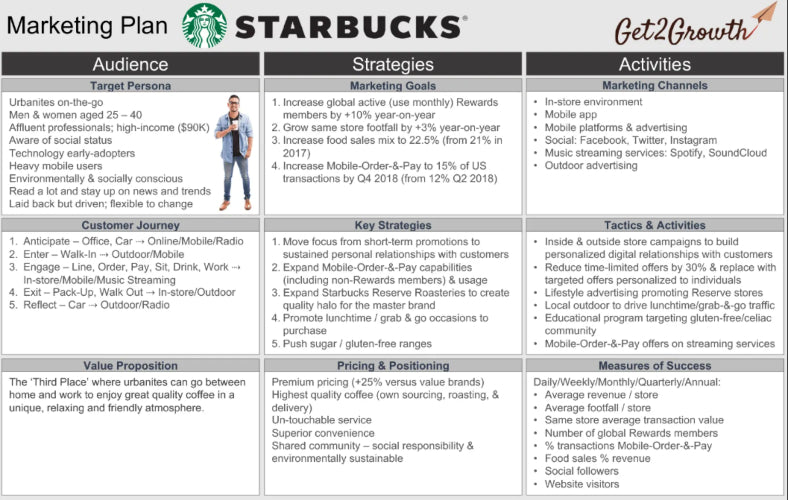
An effective marketing plan not only serves as a roadmap for your business but can heighten the success of your marketing efforts helping you in accomplish many other things:
- Focusing on high-priority initiatives
- Getting rid of any project that doesn't move you toward your objectives
- Identifying the right KPIs (Key Performance Indicators) and metrics to track progress
- Aligning everyone in your team in the same direction
- Setting realistic and measurable goals
- Identifying your target market and target audience so you can define how to reach them
- Developing a structured approach to creating services and products that satisfy the customers' needs
- Retaining your customers
- And, lastly, saving time and money
Overall, the marketing plan is a reference document that will hold you accountable, and it will help you execute your marketing strategies.
Steps on Creating a Marketing Plan: Outlining the Structure
Now, let's take a look at how to create a solid marketing plan. The very first step of all is to outline the plan itself.
It will grant you the structure in a way that makes sense for your company with the product or service that you're delivering. It also serves as a table of contents for your completed plan. The details of your marketing plan will vary based on your business and your relative marketing position, whether you are a B2C (business-to-consumer), B2B company (business-to-business), a large corporation, or a small business.
An example of a marketing plan outline may have the following content (which you can modify to fit your needs):
- The Title Page
- Table of Contents
- Executive Summary
- Vision and Mission Statement
- Situation Analysis
- Business Capabilities
- Main Objectives
- Target Market
- Marketing Strategy
- Standards of Performance and Measurement Methods
- Financial Projections and Financial Summary
- Appendix, with Research Results and Product Specifications
Marketing Plan Mission and Vision Statement
A mission statement is a summary of the main purpose that your company is chasing and how your business provides value to the customers.
A vision statement describes the aspirations of a company or entity and serves as a framework for strategic planning. Its purpose is to guide internal decision-making for future actions.
Situation Analysis and Your Business Capabilities
You need to get a clear picture of the health of your business so your marketing strategy can be effective. With deeper insight into your company's external and internal environment, you will be able to develop a plan that takes advantage of opportunities and reduces risk. This enables you to introduce your company in the market in a way that sets you apart from the competition.
There are three methods that you can use, which analyze the key elements that would impact the health of your business.
SWOT Analysis

It is a commonly used tool to analyze the internal weaknesses and strengths of a business, together with any external opportunities and threats.
When you detail them, keep in mind that within the strengths and weaknesses, there are factors that your business has control and notion over, while in opportunities and threats, we are dealing with things that may impact our company from the outside.
To summarize the idea, you should include the following in each segment:
- Strength: What your business is good at, what’s working, and what the customers enjoy and like about your product or service.
- Weaknesses: What we should fix and strengthen, and what we should become more efficient at.
- Opportunities: What the industry might soon want, what we'll be good at, and what will be our differentiator.
- Threats: What we think could hinder our growth, and what or who we think can take our possible customers.
With a SWOT analysis, you can identify weaknesses that can be turned into strengths and leverage those strong points in order to mitigate threats in the market and take advantage of opportunities.
Porter’s 5 Forces

It is used to evaluate the competitive landscape and to pinpoint the factors in your industry that can reinforce or weaken the position of your business.
These five forces include the next components:
- Industry Rivalry: This remarks the industry competitors (industry concentration and growth), the quality differences, barriers to exit, and the switching costs.
- The threat of New Entrants: It checks the barriers to entry (production and labor costs, specialized skill requirements), government regulation, and switching costs.
- Bargaining Power of Buyers: These are the size of each customer order, price sensitivity, buyer’s ability to find alternatives, and switching costs.
- Bargaining Power of Suppliers: The quantity and size of suppliers and differentiation of products between suppliers.
- The threat of Substitute Products: The number of alternatives available, buyer willingness to substitute, and perceived level of product differentiation.
When you finish assessing each of the five forces and rating them from low to high, you'll be better equipped to identify and enhance your company's competitive position within the industry.
5C Analysis
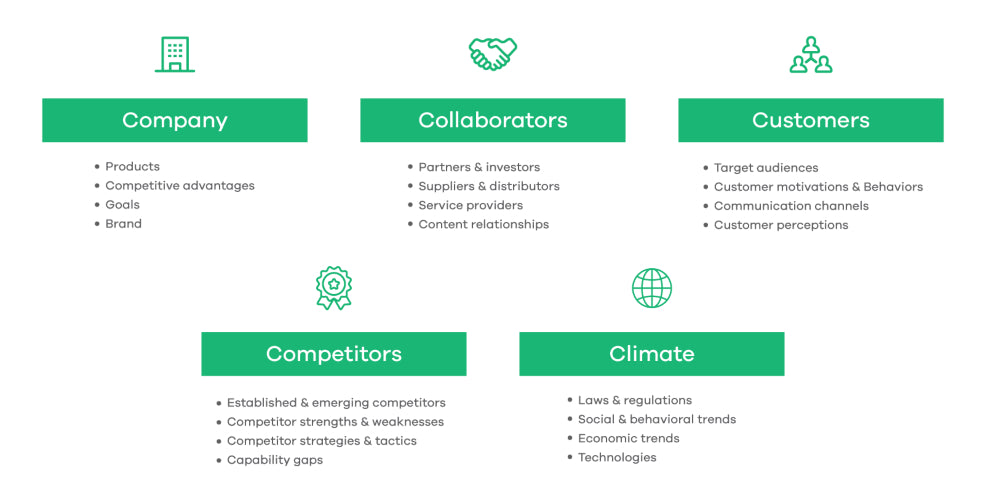
This framework is used to evaluate the five key components of marketing decisions for a business. The five Cs of the marketing program are the following:
- Company: Recognize the Unique Value Proposition (UVP) or the sustainable advantage the company possesses. It can include cost leadership, economies of scale, and differentiation. This component involves evaluating the services, products, culture, and brand perception of the business to define if it's in the best position to satisfy customers.
- Customers: Having an insight into who your clients are and what motivates them to buy is essential before defining how you will meet their needs. Research who is buying products, how the clients interact with your business, customer feedback, and seasonal trends to gain an understanding of the preferences of your customer base.
- Competitors: Learning and understanding how your competitors perform their business will enable you to craft marketing tactics that will beat them at their own game. Learn about their strengths, weaknesses, and market position by researching what makes them stand out, what kind of content they are producing, and how their customers interact with them.
- Collaborators: One of the key components is leveraging relationships with partners, distributors, and people that support your daily business operations. They can be highly favorable for helping your company to run more efficiently as these collaborators get your products in front of customers. Create a list of all these players your business works with to create strong relations and uncover opportunities.
- Climate: Getting a sense of legal, societal, and industry trends that could affect your business plan will allow you to make more proactive decisions. Keep a watchful eye on where the market is heading in terms of social and economic trends that could impact how buyers purchase products or new technologies that could change how businesses operate.
Performing an analysis utilizing any of these methods will allow you to check the organization and industry landscape, establish your marketing goals and overall business objectives, identify opportunities, and create an actionable marketing plan to take steps toward achieving those marketing objectives.
Once you are done with the situational analysis, point out the core capabilities of your organization that you can exploit to gain a competitive foothold.
One way to identify your own competencies is by gathering feedback from your team and related players. Check together what would be your business' strengths, the team's strengths, what differentiates your product and service from your competitors, and what will make us the best in the industry.
Your main competencies should be a reflection of your vision and mission statement, and these statements should be adjusted as the core competencies change.
Set Your Marketing Objectives
What are your marketing goals? More sales? Raise brand awareness? Grow as a business in a certain timeframe? Whatever your marketing objectives are, ensure that they are well-detailed and that you have the necessary resources to achieve them.
You can check how well your objectives adapt to reality by implementing the SMART goals system, which stands for:
- Specific: It clearly conveys the main objectives you are trying to accomplish.
- Measurable: Define key tracking metrics that you will use to check on your progress.
- Achievable: Make sure that you have the capabilities needed and that you can allocate resources correctly to reach your goals.
- Relevant: Verify that the marketing objectives support the overall mission and vision of the company.
- Time-oriented: Set deadlines and milestones for your goals to stay on track.
Define Your Target Market

When you complete defining your goals, it is time to point out to the audience that your business will direct its marketing efforts and resources to in order to achieve those goals. Since it is very inefficient to target everyone, the idea is to focus on clients that will choose you over the competition and will stay loyal to your brand.
Look at your existing customers and search for mutual preferences, interests, and pain points among those buyers so you can build a customer profile. You can also collect information from them by doing surveys, research, looking at focus groups, or simply asking for feedback, so you can gain more insight and data about the shared characteristics of your buyers. Then capitalize on that to attract more customers.
You should check the clients of your competition. Learn who they are targeting and the benefits they provide, and see how each of those benefits solves a specific problem. With this information, you can find niche markets or opportunities that your competitors are missing out on.
Examine your products and services and list out the key benefits they provide and how each will solve a certain problem. You can use this information to quickly recognize which people are most likely to have a problem that those benefits solve.
Lastly, you should create a target persona. Once you pick out the kind of people who will benefit from your product, you need to convert them into actual buyers and attract them to purchase it. Figure out what the demographics of each customer look like, as well as the characteristics of those buyers. Then, identify how the target persona may find your service or product, what will motivate them to purchase it, how it fits into their lifestyle, and how they will use it.
Develop The Marketing Strategy
Now you need to create a plan on how you are going to reach your prospects and convert them into actual customers. Determine how you are going to introduce yourself in front of your audience to bring awareness about your service or product and convince them to finally purchase it.
There are several steps and methods that you can follow in order to approach and attract your target market.
Define Your Marketing Channels
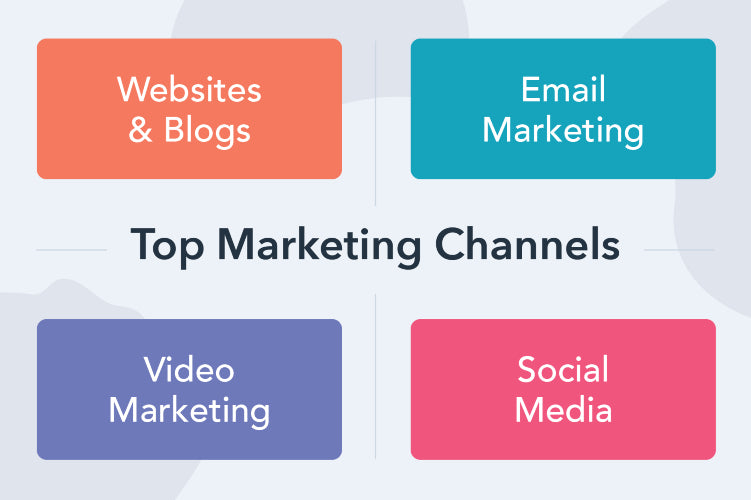
Your marketing plan should include a list of the marketing channels that your organization might use. These are the place where you will publish content that educates the buyers, spread awareness, and generate leads.
You can use this section to map out which social networks you want to launch a business page on, for what you will use this social media, and how you will measure the business's success on this network.
One of the purposes of this section is to prove to superiors (from the marketing department and outside) that these channels will serve to grow the organization. And if you have an extensive social media presence, you might consider elaborating on the social strategy in different social media plan templates.
The Buyer’s Buying Cycle
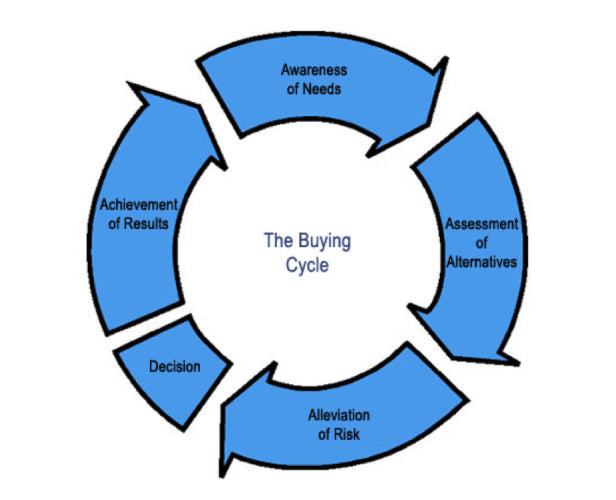
Once you have picked out your target buyer, you need to develop content that will incentivize it through each stage of the customer's journey. Understanding how they make purchase decisions will give you the knowledge to align your content strategy accordingly.
- Awareness: Where the prospects have a problem, and they're looking for a solution. This is where organizations invest resources in advertising media and any other channels to make potential customers aware of your product.
- Consideration: Where the buyers consider the many solutions available and need convincing to purchase it finally. It is where business spill out in great detail all the benefits the customer will receive when using the product and try to convince them why they are better than the competition.
- Intent: Where the buyers are fully convinced that they have to purchase that product to solve the problem and start to compare the different alternatives. It is time for organizations to reassure their customers that the product or service they offer makes the most sense over the competition from different perspectives (economic, emotional, or lifestyle).
- Purchase: Where the buyers have decided on which alternative they will get and from whom they will purchase it. Keep in mind that if the customer chooses your business, it doesn't end here. The true goal of your organization is to develop a relationship with the buyer to increase their loyalty towards your brand and find upsell opportunities based on purchase history.
- Repurchase: The buyer needs to renew a perishable product or renew your service (like a subscription). You need to foster the relationship by offering some incentives to repurchase and increase brand loyalty. You can do email marketing campaigns as content to retain your customers, letting them know of different offers.
Establish your content goals, strategies, and tactics to meet those objectives and the metrics to measure results before creating content for these buying cycle stages.
The 4Ps of Your Marketing Mix
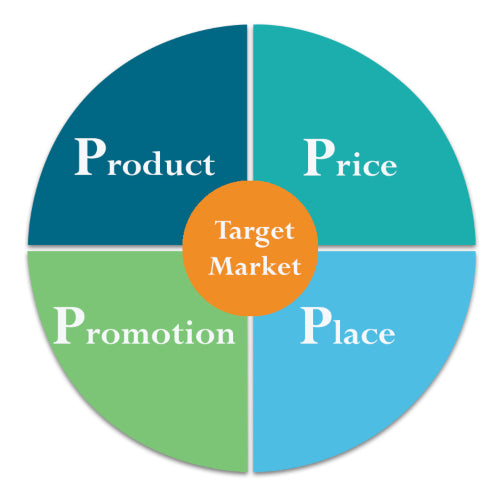
In order to guide potential clients through each stage of the buyer's lifecycle, you can use your marketing project management skills to form a proper tactic to get your business's brand in front of them and then encourage them to purchase your products. While developing your marketing strategy, you should refer to the 4Ps of your marketing mix.
The first of them is "Product," referring to the good or service that you are offering as a solution to fit the customer's needs. Differentiating your product in the market and emphasizing the UVP are the first steps in positioning your brand and setting yourself apart from the competition.
Then we have the "Price." It's what the buyer is expected to pay for the service or product. Understanding your product's perceived value in the customer's eyes is critical before you can effectively set a price. You can start by researching your competitors and see how much they set the price for similar products.
Now we head to the "Promotion," where we are referring to the communication aspect of the marketing strategy. This is where you raise awareness about your brand by getting the word out and implementing different methods like videos, advertising, press releases, trade shows, and event marketing.
Last but not least, we have the "Place," and we check where the customers are purchasing our products. Is it going to be online, or will the customers buy our products from a physical location? Keep in mind that the marketing channels that you'll use from producer to customer are part of the distribution strategy.
Set Up The Budget
With a budget in line, you will have parameters to work within while implementing your marketing plan. It prioritizes your needs so you can allocate resources accordingly towards high-priority goals first.
There are some useful tips that you can follow, such as building your budget plan based on the last year's numbers (or starting from scratch according to priority); making a list of action items, and then an estimated cost for each item based on distribution, marketing, and promotional expenses; and investing in areas with a higher return on investment (ROI) to increase your buying power.
Establish The Marketing Plan Timeline

With a marketing plan timeline, your team will be able to view all projects, events, campaigns, and any other related tasks in one place with their respective deadlines. It will make sure that everyone knows when it's due, what's due, and what will be next in the pipeline.
Once you are done with the analysis, research, and establishing the goals, it's time to set the deadlines for each assignment. Everything needs to have a deadline, and you should also consider any holiday or event taking place over the year.
Start by estimating how long you think these tasks will take and set the deadline accordingly. Then, you can track the actual time it takes to complete this task in similar types of projects. Once you are done with some of them, you'll have a better idea of how much it will take to finish each task and be more precise about setting deadlines.
Building a One-Page Marketing Plan
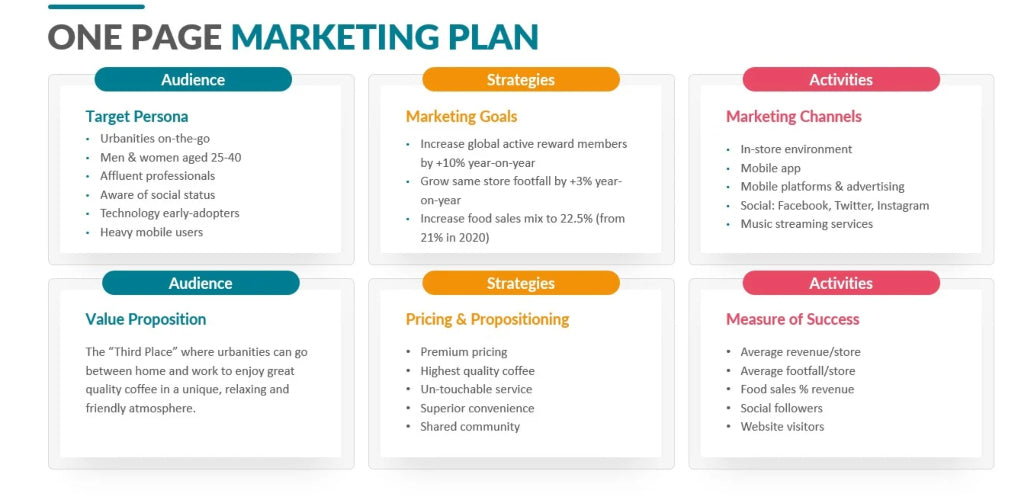
Now that you know and understand how to create a proper marketing plan, we can proceed with the making of a 1-page marketing plan. It is a helpful tool that will make you focus your marketing efforts on your organization.
There are many ways you can approach your plan and not just stick to the pre-launch, launch, and post-launch of the product. It will depend on the scope of your marketing efforts. A one-page marketing plan is a way to capture where you are trying to go with them.
Benefits of Writing a One-Page Marketing Plan
Ultimately, a one-page marketing plan is an actionable marketing plan. It can help you check how you are doing your marketing efforts and stay on track, eliminating unnecessary work and spending.
Taking an informal approach will make it harder to measure and may leave you with too little to show. Formalizing your marketing plan into one single page will be useful for you to stay focused and truly measure what is working and what is not.
Structure of a One-Page Marketing Plan
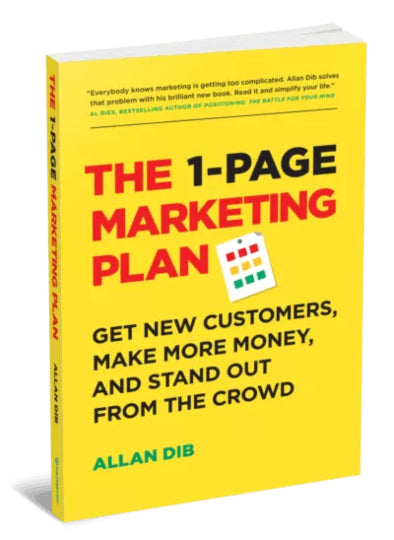
Following the Allan Dib model, you are going to use a "before lead capture, during lead generation, and after the prospect becomes a customer" approach. This one-page marketing plan template is divided into nine different steps that you should follow to reach your goal of securing customers for your organization.
Identify Your Target Audience
As stated before, this is a crucial point for your marketing plan. If you try to sell your product to the wrong people, you won't get anywhere and won't go any further from the "before" section of the one-page marketing plan.
Find your place in the competitive landscape and define your niche audience. This step should come early during the product and offer development process.
The key is to find a target market that shares the same pain points and to which you can provide the solution. If you have been involved in one of your target markets, then you can easily understand their challenges and worries, and you can start from there.
Otherwise, you need to do some market research. Look out for books, forums, and any other channel you may consider worthy of checking. Then evaluate the competition, value the marketplace, see which stands for personal fulfillment, and check the profitability.
Write the Message for Your Target Market
Creating a marketing message should clearly state the benefits of your service or product. It's about getting into the conversation that is already having a place over your target market.
You'll need to know what is happening in the industry and the lives of your customers. You can even interview them and then use that information to craft your message so when the person reads, it would think that it is directed towards them.
Keep in mind that a great marketing message needs to be easy to understand for your audience and easy to communicate with just a few words.
Determine The Marketing Channels
Reach out to your audience through advertising media. But you should beware of some aspects or not be too confident with the use of only online and digital marketing.
Digital marketing is exposed to all the same factors that would improve or damage your brand. You can reach your customers through digital and social media if they are usually online. However, if the direct approach of an email becomes more effective, then it suits you to keep that channel instead.
Once you identify the media to use, you might need some extra hands to deal with this situation, as it is better to leave it to someone who is an expert and not take it all by yourself (if you aren't an expert in the field).
Attract Those Prospects
If you can't capture the leads, your marketing program won't generate sales, and all efforts in crafting a great marketing message and producing an exceptional product will be in vain.
To attract those prospects, think of connecting with human beings on the basis of easing their lives a little with a nice gift. Ultimately, you need their data to keep in touch with your customers and continue to contribute to their lives with your offerings.
Nurture Those Leads
You need a good follow-up method that makes people feel more like welcome guests rather than just another number on the list. When you nurture them with valuable content, they will be much more likely to be open and come back for anything you offer down the road.
Nurturing can yield big dividends as not everyone is ready to buy immediately. For larger purchases, it may take weeks rather than just a few days for customers to make a decision to buy it.
Convert Them Into Actual Customers
This is the final stage when the "prospect" goes from being a "lead" to finally becoming a proper "customer." This is how your marketing efforts are designed, and it is time to convince the person to take the final steps on purchasing your product and being a buyer for your company.
Deliver a Classy Experience For Your Customers
Now that we entered the "after lead generation" section of the one-page marketing plan, we had to take a step beyond the transaction made.
People choose you from a wide variety of options and alternatives available, so now you are expecting to be greeted with a flawless delivery from your business and a world-class experience. Failing here may end up in losing a returning customer.
Increasing Customer Lifetime Value
Increasing your lifetime value is about looking for ways to increase the amount of money that someone may spend on you. But while doing so, you have to deliver genuine value to your audience.
Many times it's easier to convince a returning customer rather than generate new leads, which could be limited by your marketing budget.
Set a System to Get Referrals From Customers
Another way to generate new leads is through referrals. But those won’t come alone by themselves.
Instead, you have to create a specific system where customers expect that they need to deliver you some referrals (or you have a defined process for requesting those referrals and leads).
The Allan Dib’s One-Page Marketing Plan Template
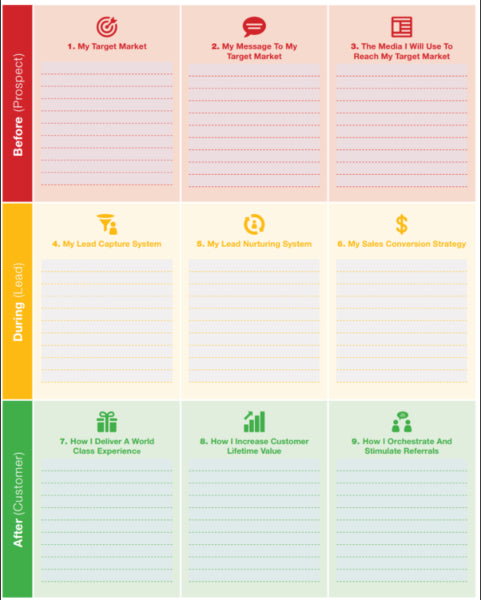
After explaining how to make a solid one-page marketing plan, you may ask, "how do you actually write it down?" Thankfully, the "Allan Dib model" has its own template that you can download from the Successwise website as a PDF document and modify from the browser to introduce your own marketing plan.
Marketing Plan Templates for Microsoft Word and Excel
There are several sites where you can make a marketing plan template, but most of them need to use their software, which can be a bit daunting, and also, you may be in a hurry. So, what about making your marketing plan template in Excel or Word? Then this is where you should look, as we will show some template examples that you can use for your benefit.
And if you need a CD key for Microsoft Word or Excel, you can get it from RoyalCDKeys at a low price. It comes with the latest version of Office 2021 and the whole package, so you won't get only Word and Excel but all the programs that come with Microsoft Office.
Simple Marketing Plan Template

This template is a high-level document that guides your marketing initiatives and ensures your goals are aligned with the business objectives.
It goes to a simplistic design, where you can outline the purpose that your business serves, as well as the target market, strategic goals, and standards of performance, to make sure that you have a thorough and deliberate plan of action.
You can download it from the Smartsheet website as a Word file.
Complete Marketing Plan Template

This marketing plan template serves the same function as the previous one. But, of course, the main difference is the design, as it is more complete and artistic.
You will able to do everything that you have to for a marketing plan and more, with an eye-catching presentation. And you will able to modify it with your own style and images.
One-Page Marketing Plan Template
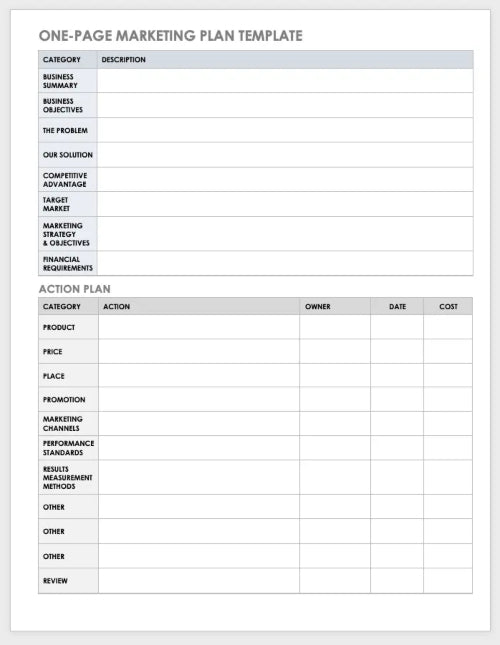
This template is different from the Allan Dib model that we introduced earlier as it serves more as a summarized version of a common and extensive marketing plan template. It takes its comprehensiveness and pares it down to only the key elements for better readability.
It has space for a concise executive summary, target market, marketing strategy, overall objectives, financial requirements, and more sections. The template also has an action plan to detail role assignments, marketing activities, deadlines, and costs.
Download it from Smartsheet.com as an Excel file or a Word document.
Digital Marketing Plan Template
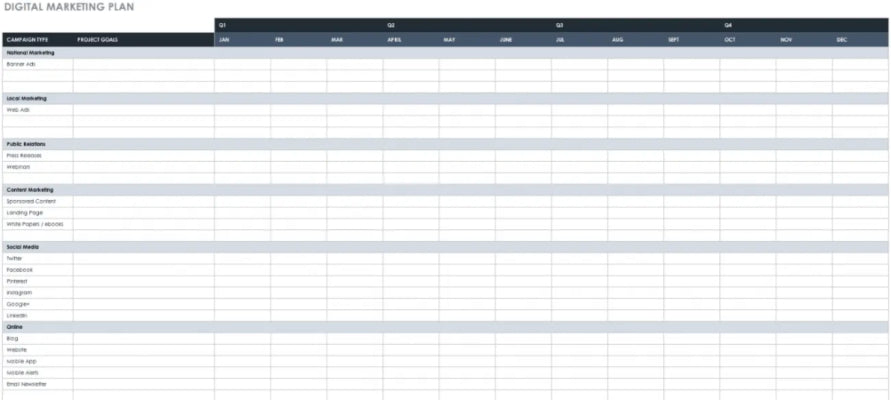
It includes sections for online advertising and analytics, SEO strategy and content marketing, social media, and tools for tracking metrics.
This digital marketing plan template is divided into months to create a proper timeline for your digital marketing plan. You should use it when creating a comprehensive plan of action for online marketing.
Business Marketing Plan Template
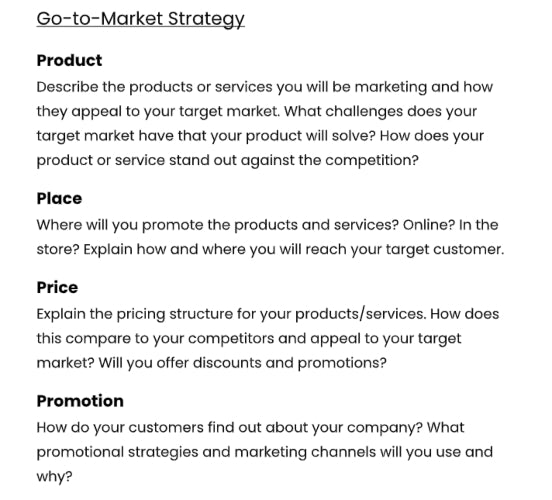
With this template, business owners can fill it with their own information to create a proper marketing plan. It outlines items like executive summary, company overview and mission, marketing team, target market, go-to-market strategy, marketing goals, action plan, tools and resources, and marketing budget and expenses.
Bottom Line
Creating a good marketing plan is crucial for the business' success, as no matter how excellent your product might be or how well you execute your service if people don't get notice about it, your sales will simply plumber.
With the one-page marketing plan template, you will able to present it in a way that everyone can understand quickly. It brings a concise and summarized way over the long and extensive that a common marketing plan can be. So, check the templates that we showed you and start making your marketing plan for your business.















